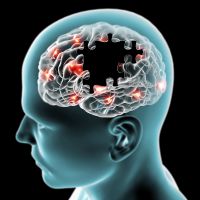Monoclonal antibodies are antibodies produced by only one single, specific type of cell and all have the same activity. They can be purified and infused in any organism to produce a desired effect. Previous research suggests that most neurodegenerative diseases including Alzheimer’s, Lewy Body and other dementias, Parkinson’s and prion diseases develop and progress along similar paths. In each disease, a particular protein undergoes a change in its shape from a soluble, physiologically functional protein to a protein that has lost the ability to perform its required tasks in the brain, starting off a chain reaction of binding to each other with little control. These aggregates become toxic to brain cells. Fernando Goni, from New York University Langone Medical Center (New York, USA), and colleagues determined the monoclonal antibodies’ binding specificity to oligomeric forms of a protein called alpha-synuclein, which accumulates and presents in Lewy body containing neurons of Parkinson’s disease patients. The team found that their monoclonal antibodies reacted to an intermediate, or “oligomer” state of the amyloid and tau proteins seen in Alzheimer’s disease, as well as to prion disease proteins. As an extension of this study, the investigators posit submit that monoclonal antibodies designed to specifically target these misfolding proteins in soluble, aggregated states, may be ideally suited to treating neurodegenerative diseases. Observing that: “The majority of current methods is based on immunological targeting of a self-protein; hence, benefits need to be balanced against risks of stimulating excessive autoimmune toxic inflammation,” the study authors submit that: “For greater efficacy the next generation … needs to focus more on concurrently targeting all the intermediate toxic conformers of oligomeric A[beta] and tau species.”
Innovative Immunotherapy
Wisniewski T, Goni F. “Immunotherapeutic approaches for Alzheimer's disease.” Neuron, 2015 Mar 18;85(6):1162-76.
RELATED ARTICLES




